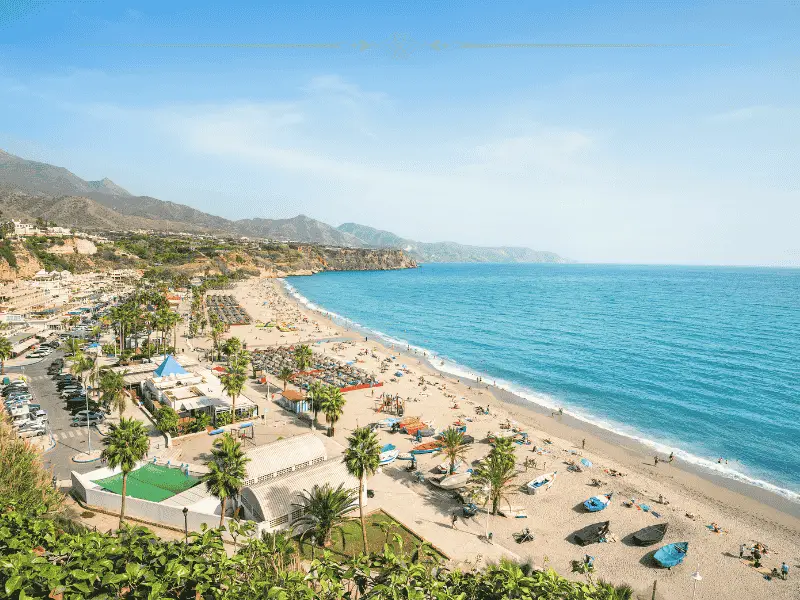Spain has launched unprecedented measures to control tourist accommodations across its most popular destinations, marking a significant shift in how the country manages its vital tourism sector. The move comes as cities like Malaga implement strict controls on holiday rentals, responding to mounting pressure from residents over housing affordability and quality of life concerns.

Malaga, the bustling capital of Costa del Sol, has become the latest Spanish city to impose strict limitations on tourist accommodations, affecting 11 districts across the city. The new regulations, which took effect in February, prohibit the registration of new holiday rentals in areas where such properties already make up more than 8% of residential buildings.
The coastal city joins Madrid and Alicante, which implemented similar restrictions last year, while Barcelona and Seville are expected to follow suit. These measures represent the most significant attempt yet to address what local officials describe as an unsustainable surge in tourist accommodations.
Impact on Current and Future Visitors
Despite headlines about a “tourist ban,” travelers can still book accommodations throughout Spain’s major cities. The approximately 13,000 existing registered holiday rentals in Malaga continue to operate normally. However, properties registered after February 22 must meet new requirements, including having independent access separate from residential areas, or risk losing their licenses.
Local authorities emphasize that these measures target property owners and new rental registrations rather than tourists themselves. However, visitors should expect some changes, particularly in the availability of rental properties in city centers.
The new regulations emerge amid growing tensions between tourists and residents in Spain’s most popular destinations. Recent months have seen an increase in anti-tourism protests, particularly in areas where housing costs have skyrocketed. In Malaga’s historic center, residents report being priced out of their neighborhoods as property owners convert residential buildings into tourist accommodations.
Maria Rodriguez, a community organizer in Malaga’s historic district, has witnessed the transformation firsthand. “Entire buildings have been converted into tourist apartments, leaving long-term residents with few affordable options,” she explains. Similar stories echo through the narrow streets of Madrid’s central neighborhoods and Barcelona’s Gothic Quarter.
Additional Security Measures
Beyond rental restrictions, Spain has implemented new security requirements affecting all tourists. Visitors must now provide more detailed personal information when booking accommodations or renting vehicles, including bank card details, family relationships, and home addresses. These requirements, introduced by Spain’s interior ministry, aim to enhance law enforcement’s ability to track criminal activity.
Tourism represents approximately 12% of Spain’s GDP, making any regulatory changes particularly sensitive. Industry representatives warn that excessive restrictions could harm the sector’s recovery following the pandemic years. However, local officials argue that uncontrolled tourism growth threatens the very characteristics that make Spanish cities attractive to visitors.
The Spanish Tourism Council reports that the country welcomed over 85 million international visitors in 2024, approaching pre-pandemic levels. This surge in tourism has contributed to significant economic growth but has also strained local infrastructure and housing markets.
Real estate experts report immediate effects in areas subject to the new regulations. Property values in tourist-heavy districts have begun to stabilize after years of steep increases. Some property owners are already adapting by converting short-term rentals back to long-term residential use.
Local real estate agent Carlos Moreno notes a shift in market dynamics: “We’re seeing more properties becoming available for long-term residents, particularly in central neighborhoods where short-term rentals previously dominated.”
Cities implementing these restrictions face significant enforcement challenges. In Malaga, local authorities have established a dedicated task force to identify unauthorized rentals and ensure compliance with new regulations. Officials are working with online booking platforms to remove non-compliant listings, though some property owners continue to operate outside the system.
Spain’s approach to managing tourism pressure has caught the attention of other popular destinations worldwide. Venice, Amsterdam, and several other European cities have expressed interest in Spain’s regulatory framework as they grapple with similar challenges.
The Spanish model, combining rental restrictions with enhanced documentation requirements, represents one of the most comprehensive attempts yet to address overtourism while maintaining a viable tourism sector.
As these measures take effect across Spain’s most popular destinations, their impact on both the tourism industry and local communities will be closely watched by cities worldwide facing similar pressures. For now, Spanish authorities maintain that these changes are essential to preserve the quality of life for residents while ensuring sustainable tourism growth for the future.




